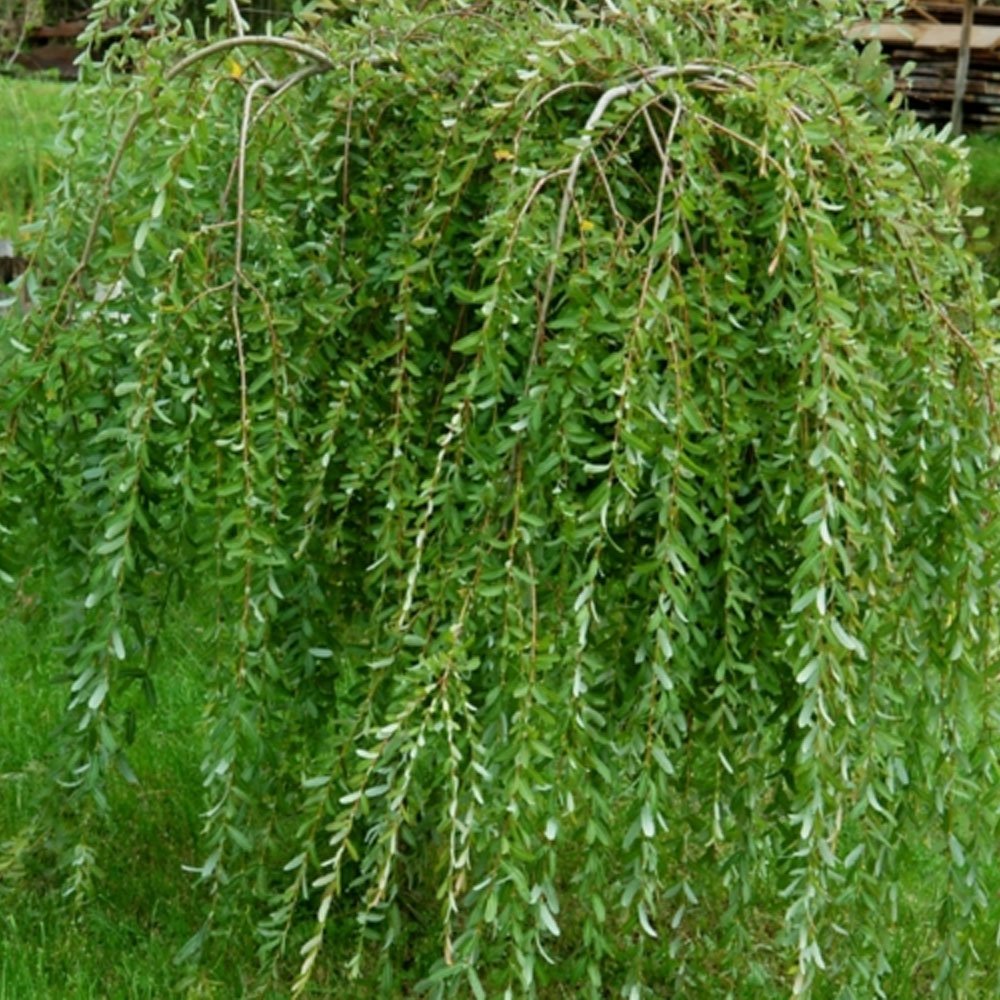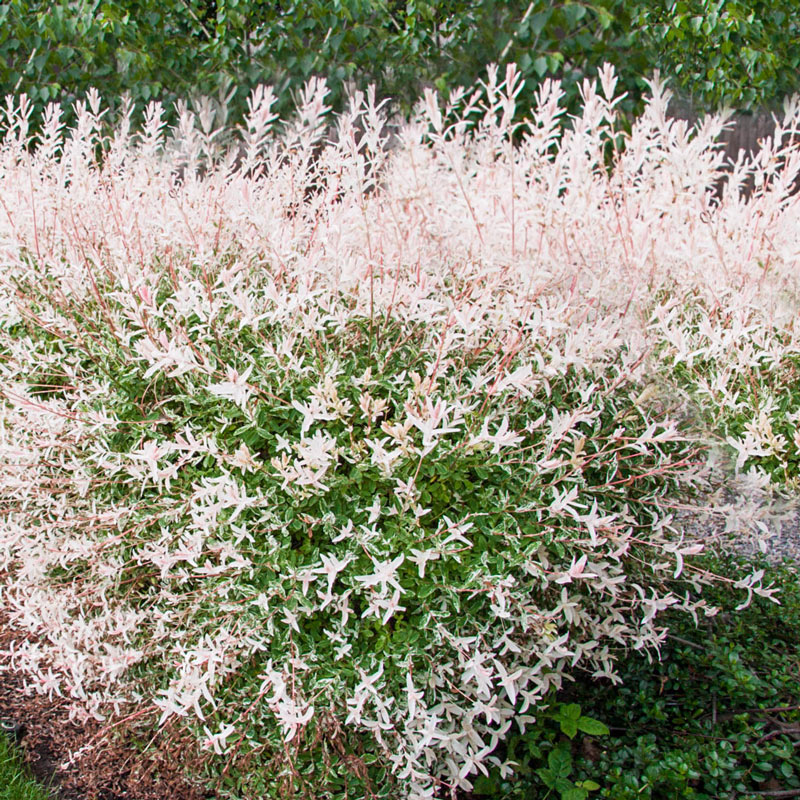Dappled Beauty: The Japanese Willow Bush
Dappled Beauty: The Japanese Willow Bush
The dappled willow bush, also known as the Japanese willow or Hakuro-nishiki willow, is a deciduous shrub or small tree that is prized for its beautiful variegated foliage. The leaves are pink, white, and green, and they change color throughout the seasons. In spring, the leaves are a bright pink, which gradually fades to white and green as summer progresses. In the fall, the leaves turn yellow before falling to the ground, revealing coral red stems.
The dappled willow bush is a relatively fast-growing plant, and it can reach a height of 8-10 feet in maturity. It is hardy in zones 4-9, and it prefers full sun to partial shade. The dappled willow bush is not fussy about soil conditions, but it does best in moist, well-drained soil.
The dappled willow bush is a low-maintenance plant, and it requires little pruning. However, you may want to trim it back in the spring to encourage new growth. The dappled willow bush is also susceptible to aphids and scale insects, but these pests can usually be controlled with insecticidal soap or neem oil.
The dappled willow bush is a versatile plant that can be used in a variety of settings. It is a beautiful addition to any garden, and it can also be used as a hedge or screen. The dappled willow bush is also a popular choice for bonsai enthusiasts.
Here are some of the benefits of planting a dappled willow bush in your garden:
- Beautiful foliage: The dappled willow bush is known for its beautiful variegated foliage, which provides interest throughout the seasons.
- Low-maintenance: The dappled willow bush is a relatively low-maintenance plant, and it requires little pruning.
- Hardy: The dappled willow bush is hardy in zones 4-9, so it can be grown in a variety of climates.
- Versatile: The dappled willow bush can be used in a variety of settings, including gardens, hedges, and screens.
- Attracts wildlife: The dappled willow bush is a host plant for a variety of butterflies and moths.
If you are looking for a beautiful and low-maintenance plant for your garden, the dappled willow bush is a great option. It is sure to add a touch of elegance to your landscape.
The Japanese willow bush is a beautiful and versatile plant that can add a touch of elegance to any garden. With its delicate pink and white variegated leaves, it is sure to turn heads. The Japanese willow bush is also relatively easy to care for, making it a great choice for even inexperienced gardeners.
If you are thinking about adding a Japanese willow bush to your garden, I encourage you to visit Garden Wiki. This website has a wealth of information about the Japanese willow bush, including its care requirements, planting tips, and pest and disease prevention. You can also find beautiful photos of Japanese willow bushes in various settings.
I hope you will visit Garden Wiki to learn more about the Japanese willow bush. It is a truly special plant that is sure to bring you years of enjoyment.
FAQ of japanese willow bush
- What is a Japanese willow bush?
A Japanese willow bush is a deciduous shrub or small tree that is native to East Asia. It is known for its delicate, oblong leaves that are often variegated in white or pink. Japanese willow bushes can grow up to 20 feet tall, and they prefer moist, well-drained soil. They are hardy in USDA zones 5-9.
- How do you care for a Japanese willow bush?
Japanese willow bushes are relatively easy to care for. They need full sun or partial shade, and they prefer moist soil. Water them regularly, especially during hot, dry weather. Fertilize them once a year in the spring with a balanced fertilizer. Prune them in the spring to remove dead or diseased branches, and to shape the plant.
- What are some common problems with Japanese willow bushes?
The most common problems with Japanese willow bushes are leaf spot, powdery mildew, and aphids. Leaf spot is a fungal disease that causes brown or black spots on the leaves. Powdery mildew is a fungal disease that causes a white powdery coating on the leaves. Aphids are small, sap-sucking insects that can cause the leaves to wilt and curl. To treat these problems, you can use a fungicide or insecticide, or you can remove the affected leaves.
- What are some ways to use a Japanese willow bush?
Japanese willow bushes can be used in a variety of ways in the landscape. They can be planted as a specimen plant, in a hedge, or in a mixed border. They can also be used to create a weeping willow effect, or to provide shade in a hot spot.
- Where can I buy a Japanese willow bush?
Japanese willow bushes can be purchased from most garden centers and online retailers. When buying a Japanese willow bush, choose one that is healthy and has no visible signs of pests or diseases.
Image of japanese willow bush
5 different images of "Japanese willow bush" from Pinterest:
- A large Japanese willow bush with long, hanging branches. The bush is planted in a garden and is surrounded by other plants. The leaves are a light green color and the branches are a reddish-brown color.

- A small Japanese willow bush with a weeping form. The bush is planted in a pot and is placed on a patio. The leaves are a dark green color and the branches are a yellow-green color.

- A Japanese willow bush in full bloom. The bush is covered in yellow flowers. The flowers are small and delicate. The leaves are a light green color.

- A Japanese willow bush in fall. The leaves are a golden yellow color. The branches are a reddish-brown color. The bush is planted in a garden and is surrounded by other plants.

- A Japanese willow bush in winter. The leaves have fallen off the bush. The branches are a reddish-brown color. The bush is planted in a garden and is surrounded by other plants.

Post a Comment for "Dappled Beauty: The Japanese Willow Bush"